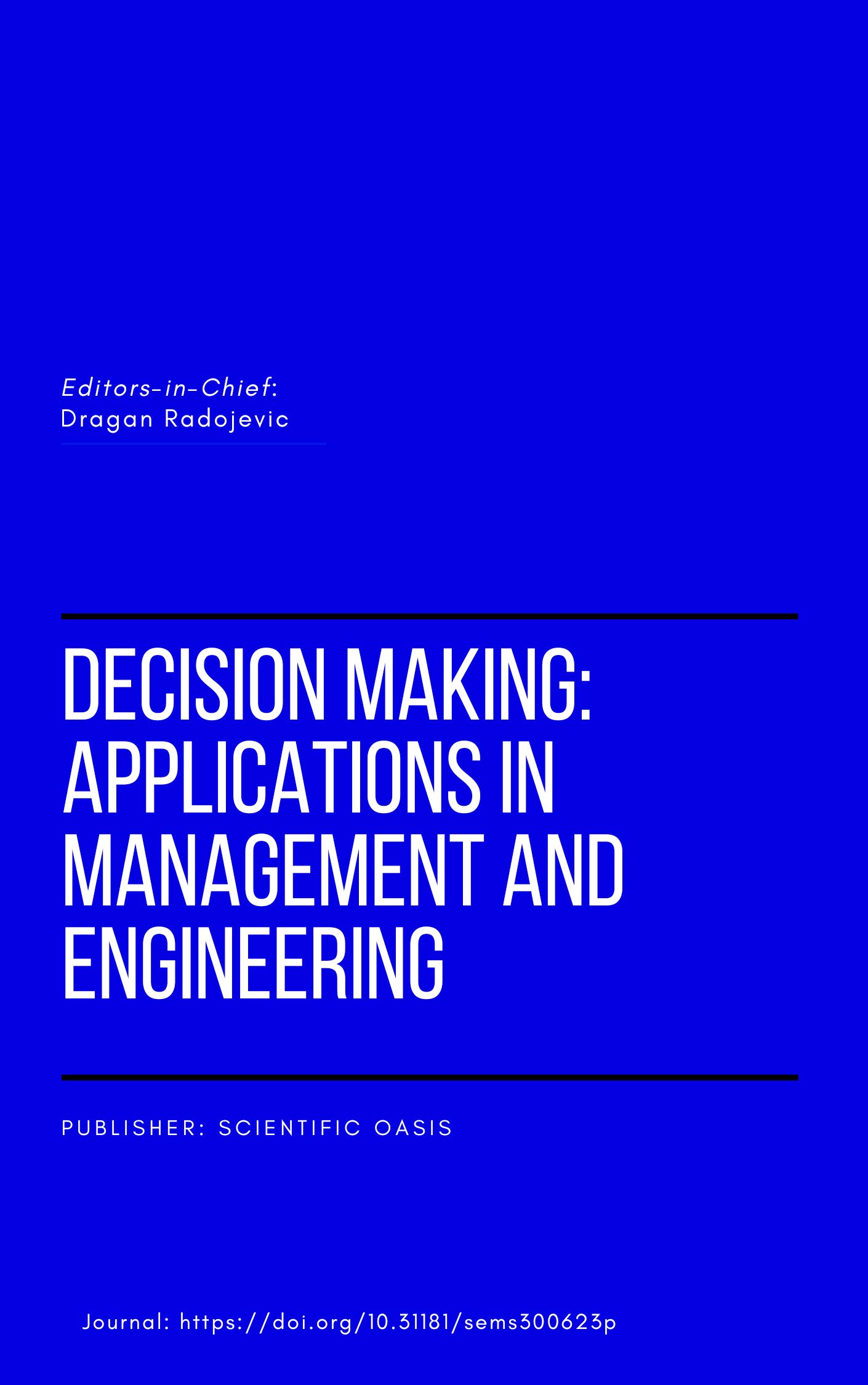Optimising Programming Skill Acquisition Using AI-Enhanced Problem Based Learning and Decision Support Models
DOI:
https://doi.org/10.31181/dmame7220241459Keywords:
Decision Support System; Problem-Based Learning; Multi-Criteria Decision MakingAbstract
A significant number of first-year computer science students struggle to acquire programming skills, largely due to challenges such as varying levels of logical complexity, limited capacity for algorithmic thinking, and the absence of tailored feedback. In response to these issues, a mobile learning application was designed, incorporating the Problem-Based Learning (PBL) approach. This application integrated interactive exercises, automated feedback mechanisms, and collaborative elements to facilitate the learning of C# programming. The effectiveness of this intervention was evaluated using a quasi-experimental research design, involving 60 participants divided into control and experimental groups. Findings demonstrated that the experimental group achieved statistically significant gains in programming competence when compared with the control group, with notable improvements observed between pre-test and post-test scores. In addition to the empirical analysis, the study employed the Analytic Hierarchy Process (AHP) to inform instructional strategy selection. Three pedagogical approaches—traditional lecture-based learning, non-technological PBL, and mobile-supported PBL—were compared based on usability, learner engagement, skill enhancement, and scalability. Weights were assigned to each criterion, and AHP analysis revealed that the mobile-supported PBL approach ranked highest, indicating a pedagogical advantage in this context. The outcomes of the study provide valuable insights for educators, researchers, curriculum designers, and academic policymakers aiming to enhance programming instruction methodologies.
Downloads
References
[1] Aires, J. P., Aires, S. B. K., Pereira, M. J., & Alves, L. M. (2023). Using the methodology problem-based learning to teaching programming to freshman students. http://hdl.handle.net/10198/28517
[2] Ali, S. S. (2019). Problem based learning: A student-centered approach. English language teaching, 12(5), 73-78. http://dx.doi.org/10.5539/elt.v12n5p
[3] Allen, J. M., & Vahid, F. (2021). Concise graphical representations of student effort on weekly many small programs. Proceedings of the 52nd ACM Technical Symposium on Computer Science Education, 349-354. https://doi.org/10.1145/3408877.3432551
[4] Alshaye, I. A., Tasir, Z., & Jumaat, N. F. (2023). The effectiveness of online problem-based learning tasks on riyadh’s secondary school students’ problem-solving ability and programming skills. Open Education Studies, 5(1), 20220208. https://doi.org/10.1515/edu-2022-0208
[5] Barg, M., Fekete, A., Greening, T., Hollands, O., Kay, J., Kingston, J. H., & Crawford, K. (2000). Problem-Based Learning for Foundation Computer Science Courses. http://dx.doi.org/10.1076/0899-3408(200008)10:2;1-C;FT109
[6] Barrows, H. S., & Tamblyn, R. M. (1980). Problem-based learning : an approach to medical education. Springer Pub. Co. https://cir.nii.ac.jp/crid/1130282273373464320
[7] Bawamohiddin, A. B., & Razali, R. (2017). Problem-based learning for programming education. Learning, 13, 15. https://doi.org/10.18517/ijaseit.7.6.2232
[8] Condori-Obregon, P., Huallpa-Juarez, C., & Palomino-Vidal, C. (2025). Mobile application for distributing information to students at the Sciences and Humanities University. Indonesian Journal of Electrical Engineering and Computer Science, 37(2), 1085-1092. http://doi.org/10.11591/ijeecs.v37.i2.pp1085-1092
[9] Derus, S. R. M., & Ali, A. Z. M. (2012). Difficulties in learning programming: Views of students. http://dx.doi.org/10.13140/2.1.1055.7441
[10] Duch, B. J., Groh, S. E., & Allen, D. E. (2001). The power of problem-based learning : a practical "how to" for teaching undergraduate courses in any discipline (1st ed.). Stylus Pub. https://cir.nii.ac.jp/crid/1130000795577223552
[11] Faja, S. (2014). Evaluating Effectiveness of Pair Programming as a Teaching Tool in Programming Courses. Information Systems Education Journal, 12(6), 36-45. http://isedj.org/2014-12/n6/ISEDJv12n6p36.html
[12] Hsu, Y.-C., & Ching, Y.-H. (2013). Mobile app design for teaching and learning: Educators’ experiences in an online graduate course. International Review of Research in Open and Distributed Learning, 14(4), 117-139. https://doi.org/10.19173/irrodl.v14i4.1542
[13] Ismail, M. N., Ngah, N. A., & Umar, I. N. (2010). Instructional strategy in the teaching of computer programming: a need assessment analyses. The Turkish Online Journal of Educational Technology, 9(2), 125-131. https://www.researchgate.net/publication/228765283
[14] Janpla, S., & Piriyasurawong, P. (2018). The development of problem-based learning and concept mapping using a block-based programming model to enhance the programming competency of undergraduate students in computer science. Tem Journal, 7(4), 708. https://www.ceeol.com/search/article-detail?id=717326
[15] Jumaat, N. F., & Tasir, Z. (2013). Integrating project based learning environment into the design and development of mobile apps for learning 2D-animation. Procedia-Social and Behavioral Sciences, 103, 526-533. https://doi.org/10.1016/j.sbspro.2013.10.369
[16] Khakim, A. A. (2019). Problem-Based learning in programming lesson. 2nd International Conference on Intervention and Applied Psychology (ICIAP 2018), 529-536. https://doi.org/10.2991/iciap-18.2019.44
[17] Kusuma, F. I., Suryani, N., & Sumaryati, S. (2022). Mobile application-based media learning and its’ effect on students’ learning motivation. International Journal of Evaluation and Research in Education, 11(3), 1353-1359. http://doi.org/10.11591/ijere.v11i3.22481
[18] N. M. Zahid, e. a. (2015). Problem based Learning through Mobile Application. Innovative Practices in Higher Education Expo. https://eprints.utm.my/62146/
[19] Nurbekova, Z., Grinshkun, V., Aimicheva, G., Nurbekov, B., & Tuenbaeva, K. (2020). Project-based learning approach for teaching mobile application development using visualization technology. International Journal of Emerging Technologies in Learning (iJET), 15(8), 130-143. https://doi.org/10.3991/ijet.v15i08.12335
[20] Powell, L. M., & Wimmer, H. (2016). Evaluating Students' Perception of Group Work for Mobile Application Development Learning, Productivity, Enjoyment and Confidence in Quality. Information Systems Education Journal, 14(3), 85-95. http://isedj.org/2016-14/
[21] Prather, J., Reeves, B. N., Denny, P., Becker, B. A., Leinonen, J., Luxton-Reilly, A., Powell, G., Finnie-Ansley, J., & Santos, E. A. (2023). “It’s weird that it knows what i want”: Usability and interactions with copilot for novice programmers. ACM transactions on computer-human interaction, 31(1), 1-31. https://doi.org/10.1145/3617367
[22] Richardson, J. T. (2011). Eta squared and partial eta squared as measures of effect size in educational research. Educational research review, 6(2), 135-147. https://doi.org/10.1016/j.edurev.2010.12.001
[23] Rivera, M., Dávila, G., & Ruiz-Lizama, E. (2021). Design and development of an educational mobile application to optimize communication and interaction between members of educational institutions in real time. Industrial Data, 24(1), 277-292. https://doi.org/10.15381/idata.v24i1.19421
[24] Rudder, A., Bernard, M., & Mohammed, S. (2007). Teaching programming using visualization. Proceedings of the Sixth IASTED International Conference on Web-Based Education, 487-492. https://www.researchgate.net/publication/228880750
[25] Sánchez-Morales, L. N., Alor-Hernández, G., Rosales-Morales, V. Y., Cortes-Camarillo, C. A., & Sánchez-Cervantes, J. L. (2020). Generating educational mobile applications using UIDPs identified by artificial intelligence techniques. Computer Standards & Interfaces, 70, 103407. https://doi.org/10.1016/j.csi.2019.103407
[26] Simões, A., & Queirós, R. (2020). On the nature of programming exercises. arXiv preprint arXiv:2006.14476. https://doi.org/10.48550/arXiv.2006.14476
[27] Sung, Y.-T., Yang, J.-M., & Lee, H.-Y. (2017). The effects of mobile-computer-supported collaborative learning: Meta-analysis and critical synthesis. Review of educational research, 87(4), 768-805. https://doi.org/10.3102/0034654317704307
[28] Turner, S., & Hill, G. (2007). Robots in problem-solving and programming. 8th Annual Conference of the Subject Centre for Information and Computer Sciences, 82-85. http://dx.doi.org/10.13140/2.1.2425.6800
[29] Yang, W., Li, H., Su, A., & Ding, L. (2023). Application of problem based learning (PBL) and case based learning (CBL) in the teaching of international classification of diseases encoding. Scientific Reports, 13(1), 15220. https://doi.org/10.1038/s41598-023-42175-1
Downloads
Published
How to Cite
Issue
Section
License
Copyright (c) 2025 Decision Making: Applications in Management and Engineering

This work is licensed under a Creative Commons Attribution 4.0 International License.












